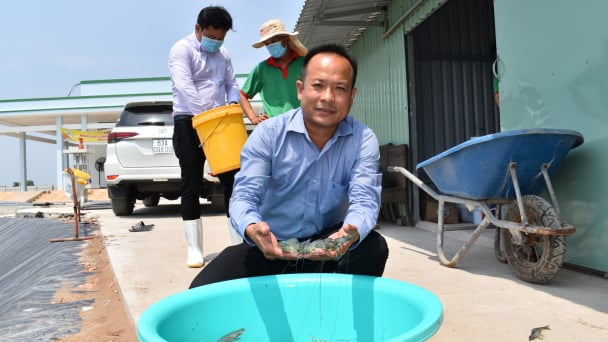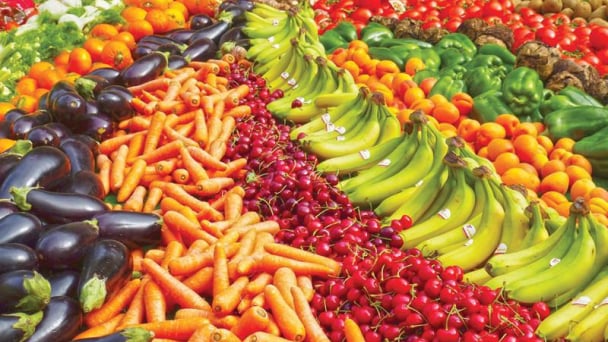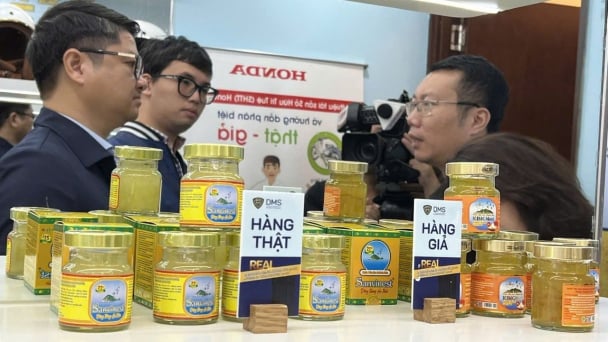May 21, 2025 | 17:49 GMT +7
May 21, 2025 | 17:49 GMT +7
Hotline: 0913.378.918
May 21, 2025 | 17:49 GMT +7
Hotline: 0913.378.918

Harvesting summer-autumn rice in Long An. Photo: Son Trang.
According to the General Department of Vietnam Customs, in July, Vietnam's rice exports reached 751,000 tons, worth 452 million USD, an increase of 46.3% in volume and 39.7% in value compared to June 2024. Thus, after continuously decreasing for 3 months in the second quarter (down compared to the previous month), rice exports in July increased again.
Not only did it increase compared to the previous month, rice exports in July also increased compared to July 2023, up 13.9% in volume and 24.8% in value. Overall, in the first 7 months of 2024, rice exports rose by 8.3% in volume and 27.7% in value compared to the same period in 2023, reaching 5.3 million tons, worth 3.34 billion USD.
According to some traders in the rice industry, rice exports are expected to continue to be favorable in the last months of the year and are expected to bring a record turnover of about 5 billion USD this year.
First of all, the rice import demand of many of Vietnam's large, traditional markets, such as the Philippines, Indonesia, etc., still remains high in the coming time.
Recently, Indonesia's National Logistics Agency (Bulog) issued an invitation to participate in an international bid for 350,000 tons of rice that Indonesia wants to import. Bulog is looking for rice from Vietnam, Thailand, Myanmar, Cambodia, and Pakistan for this bid opening. Not long ago, in July 2024, Bulog opened a bid to buy 320,000 tons of 5% broken rice, of which Vietnamese businesses won the bid for 185,000 tons.
Bulog's continuous opening of bids shows that Indonesia's demand for rice imports is high. Indonesia may import up to 4.3 million tons of rice this year, instead of 3.6 million tons as expected in early 2024. The reason is that this country's rice output from the beginning of the year to August 2024 is 9.5% lower than the same period in 2023.
According to the Indonesian Central Bureau of Statistics (BPS), Indonesia's rice imports in the first 6 months of the year reached 2.6 million tons, up 148% over the same period last year. Of which, the amount of rice imported from Thailand reached over 1 million tons, increasing by 92.1% and accounting for 40.5% of the market share; imports from Vietnam reached 704,000 tons, increasing by 76.5% and accounting for 26.6%.

Summer-autumn rice fields prepare for harvest in Tan Hung, Long An. Photo: Son Trang.
In its latest report, the US Department of Agriculture (USDA) forecasts that the Philippines' rice import demand this year will reach 4.6 million tons. Although this forecast has decreased by 100,000 tons compared to the previous forecast, it will still be a record-high import level for the Philippines.
A report from the Philippine Bureau of Plant Industry (BPI) shows that, as of the end of July, the Philippines has imported approximately 2.5 million tons of rice, up 23.3% over the same period last year. In the past 7 months, Vietnam has remained the largest rice supplier to the Philippines with nearly 1.9 million tons, accounting for 76% of the total amount of imported rice. Next is Thailand, providing 359,000 tons, accounting for 14.7% of the market share.
According to the Philippine Statistics Authority (PSA), the Philippines' rice output in the first half of this year decreased by 5.5% to 8.5 million tons compared to more than 9 million tons in the same period last year due to the impact of El Nino. This is also the lowest level recorded since 2020.
Recently, to cool down rice prices in the domestic market, the Philippines reduced rice import tax from 35% to 15%, applied until 2028.
The Philippine Department of Agriculture expects rice imports to increase in the coming months, based on the volume of import licenses that BPI has issued. In July, BPI issued 686 sanitary and phytosanitary import certificates to approved applicants to import 557,815 tons of rice. As of the end of July, the number of licenses issued was 5,133, with the allowed import volume being about 5.6 million tons.
Declining domestic production and increased domestic consumption demand combined with reduced import taxes are expected to boost the Philippines' rice import activities in the coming time.
The behavior to increase the amount of imported rice from Indonesia and the Philippines certainly has an impact on Vietnam's rice exports, because these are the two markets that buy the most Vietnamese rice today. In the past 7 months, more than 3 million tons of Vietnamese rice were exported to the Philippines and Indonesia, accounting for more than half of the amount of rice exported. It is expected that this year, Vietnam's rice exports may reach the 5 billion USD mark for the first time.
In the Mekong Delta, because rice exports have increased sharply again, commodity rice prices are also increasing. Mr. Nguyen Van Tron, a farmer in Go Phao hamlet, Hung Dien B commune, Tan Hung district, Long An, said that in recent days, many traders have increased asking to buy summer-autumn rice to sell to export rice factories, causing rice prices to increase significantly compared to the previous month. Fragrant rice varieties such as Dai Thom 8, OM 5451, and OM 18 are currently priced at over 8,000 VND/kg to nearly 9,000 VND/kg. Regular rice IR 50404 also costs approximately 8,000 VND/kg.
Overall, across the Mekong Delta region, the price of rice of all kinds that farmers sell in the fields is now 1,000 VND/kg or more higher than the price of rice in early August.
Translated by Thu Huyen

By minimizing waste, embracing modern technology, and expanding into niche markets, SalMar - the second largest producer of Atlantic salmon in the world has built a successful strategy to conquer the global market.

(VAN) One of the key factors for businesses to effectively take advantage of tariff preferences under these FTAs is the rules of origin.

(VAN) Oliyar, a prominent Ukrainian oil and fat manufacturer, has revealed plans to build a farm for 2.3 million laying hens in the Lviv region. The additional production quantities promise to change the competitive landscape of the egg market of the Eastern Europe region.

(VAN) On May 15, Ministry of Agriculture and Environment of Vietnam hosted the 'Connecting Vietnam - Germany agricultural, forestry and fishery trade' seminar in Berlin, Germany.

(VAN) In the face of counterfeit and imitation products, Khanh Hoa Salanganes Nest Company hopes for the prompt completion of the legal framework, strict enforcement against violations, and protection of the bird’s nest brand.

(VAN) Japan's efforts to lower the price of rice through the release of its stockpile may finally be making some progress, albeit at a snail's pace.

(VAN) U.S. tariffs are not only a 'shock', but also an opportunity for Vietnamese businesses to renew their mindset toward comprehensive development.